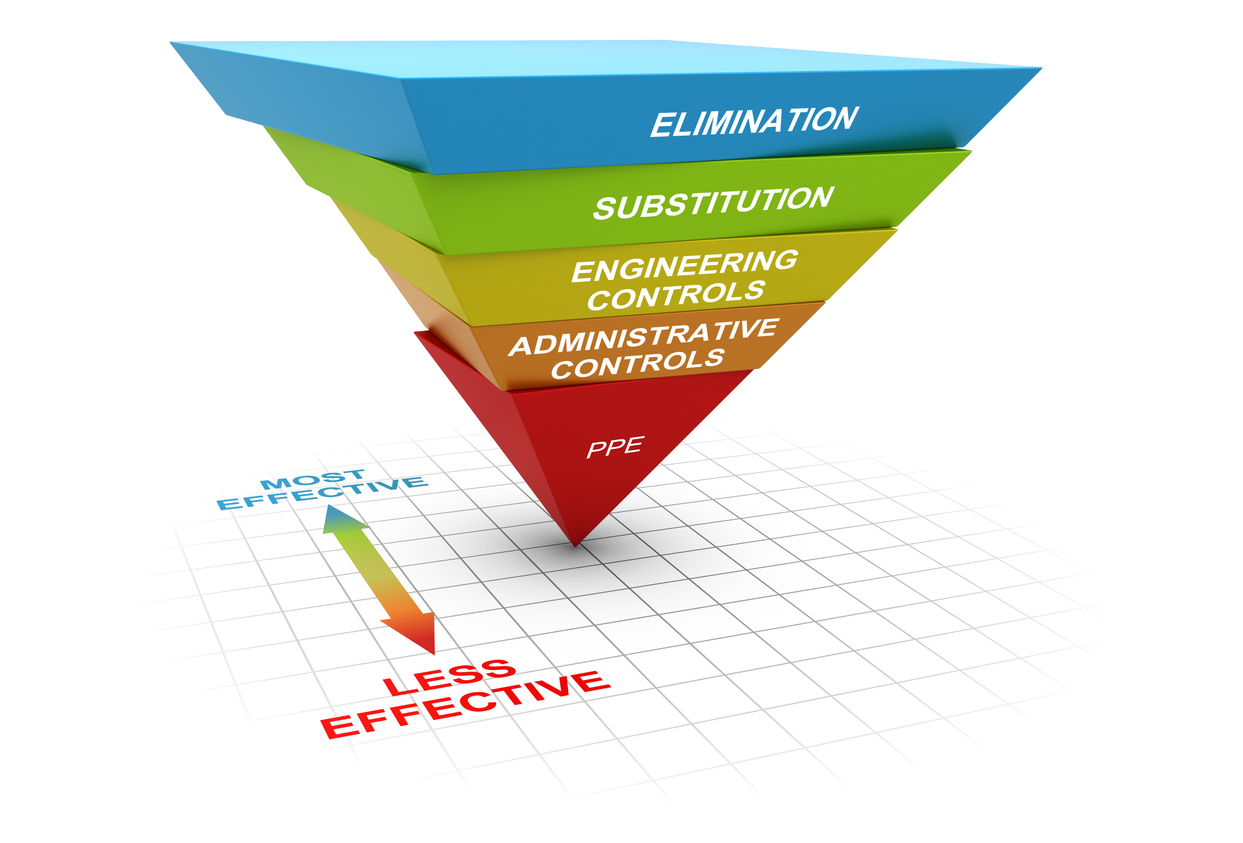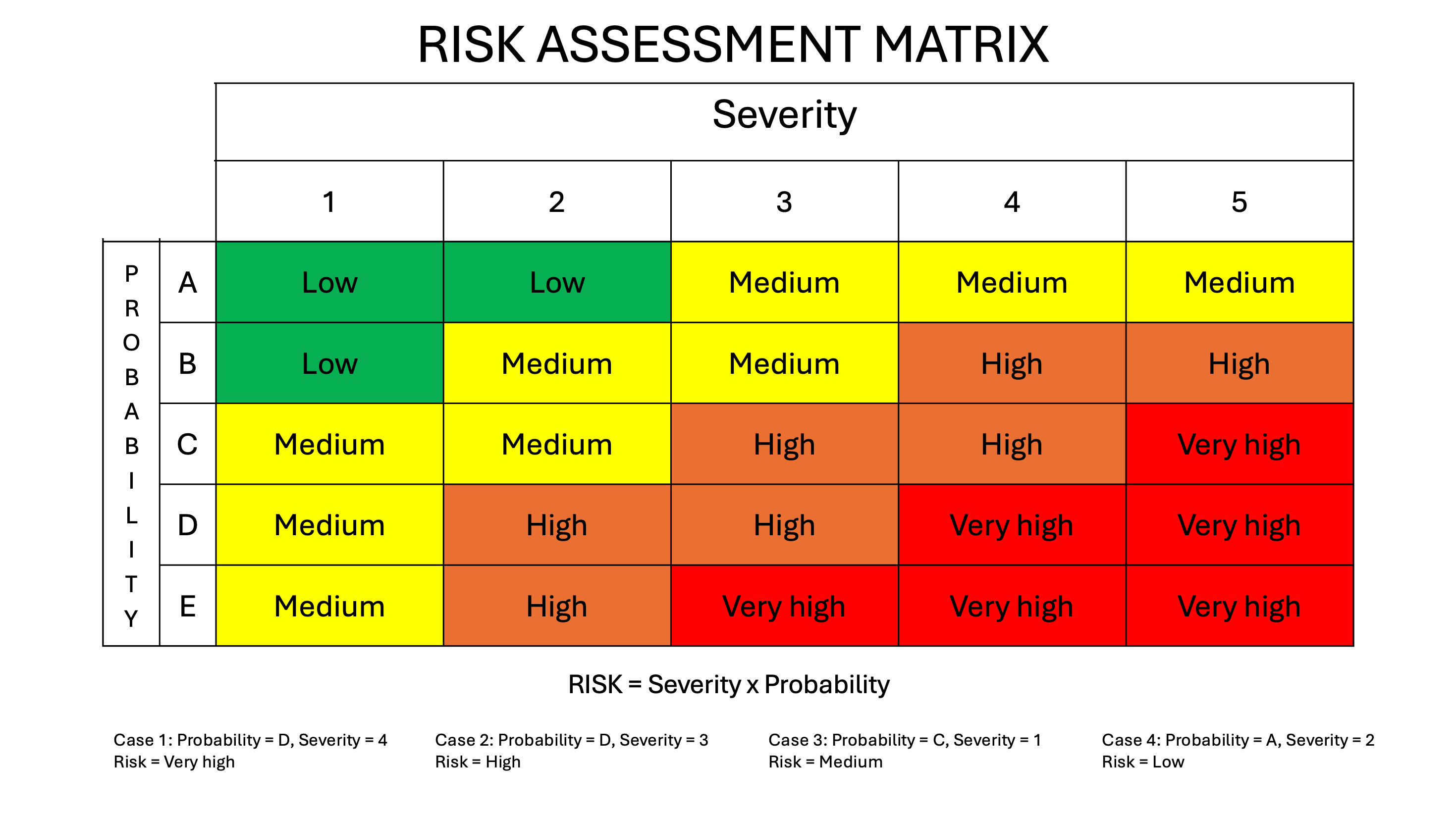Introduction
Risk assessment is used in all industries today to evaluate the level of danger associated with specific operations, substances, and equipment. Only after we learn about the dangers can we take steps to mitigate them.
Safety-critical industries use risk assessments to reduce operational risks and ensure occupational safety. Project managers use risk assessment resources to understand the impact if a hazard occurs.
Risk assessors, such as the U.S. Environmental Protection Agency, use risk assessment tools for risk analysis of contaminant impact on humans and ecology.
Organizations use an integrated risk management approach to identify hazards and mitigate them. Thus, risk assessment is a universal tool that proves beneficial in all applications. But what exactly is it? Let’s find out.
What is Risk Assessment?

Risk assessment is a process used to identify and minimize risks in the workplace. In this process, we conduct a risk analysis to identify the hazards and risks associated with a task and determine how they can be eliminated or reduced to an acceptable level.
The company defines the acceptable based on how much operational, financial, and compliance risk it is willing to assume.
For example, suppose there is a fire risk due to paper or plastic waste near a heat source. In that case, we can eliminate the risk by removing all combustible materials from the vicinity. If a fire cannot be avoided, we can ensure conditions so that the system would suffer limited fire damage.
The process is repeated for each hazard until all of them are mitigated.
Components of Risk Assessment
Hazard
A hazard is any dangerous condition, substance, or phenomenon that can cause injury or damage to persons, property, or the environment. Hazards surround us when we work in dangerous jobs such as shipping and construction. Some examples of hazards are:
-
Fire hazard/Explosion hazard – flammable materials, cargo, hot works, etc.
-
Physical hazard – enclosed spaces, working at height, working aloft, vibration, weather, noise, poor illumination, slippery decks, etc.
-
Electrical hazard – exposed cables, high voltage, ungrounded equipment, etc.
-
Substance hazard – flammable materials, dangerous goods. etc.
-
Radiation hazard – radiation from equipment, high-intensity light, heat radiation, etc.
-
Psychological hazard – fatigue, claustrophobia, nausea, vertigo, etc.
This is not an exhaustive list. Some of these are obvious hazards. Other hazards may not always be present but tend to emerge occasionally.
Risk
Risk is a combination of two factors: severity and likelihood. To evaluate the risk, we need to determine the probability of an incident and assess the severity of the consequences. If the answer to both questions is high, the risk is high. Similarly, if the likelihood and severity of consequences are low, the risk is low.
Risk is categorized into four levels: low, medium, high, and very high. Some systems may not use the ‘very high’ category and instead divide the risk into low, medium, and high only.
Control measures
When the risk of a specific hazard is high, we mitigate it using control measures. The Hierarchy of Controls defines five types of controls: elimination, substitution, engineering controls, administrative controls, and personal protective equipment (PPE).

When applying controls, we must follow the above sequence, with elimination being the most desired type of control. To learn more about control measures, click here.
Risk Assessment Steps
The risk assessment process consists of four different steps. Let us look at each of these briefly.
Step 1: Identify potential hazards
The first step in risk assessment is to prepare an exhaustive list of hazards and risks associated with a job. Please make sure to consider all hazards, including rough weather, water on deck, and hot pipelines. Anything capable of injuring or damaging personnel, property, or the environment must be included.
Step 2: Assess the severity and likelihood, and calculate the risk
The next step is to evaluate risk. To evaluate risk, we first determine the severity and likelihood of a hazard. Severity refers to the seriousness of the consequences if the hazard turns into an incident.
For example, the severity of a fall increases with the distance of the fall. The consequences will be much worse if a person falls from the top rung of a ladder compared to a fall from the bottom rung of a ladder.
The likelihood is the probability that an incident will occur. For example, the probability of falling from the ladder increases if it is slippery or if the worker is carrying heavy items while climbing.
Risk = Severity x Probability

The risk can be evaluated using the following matrix. This type of risk assessment is also known as a quantitative risk assessment.
As you can see, the risk increases with greater severity and likelihood, and vice versa. When the risk is high, jobs need to be suspended until the risks have been reduced to an acceptable level.
Step 3: Identify and implement controls
If we determine that the risk is high, we develop a mitigation strategy for risk management. These controls must effectively reduce the risk. For instance, if someone is going to work near a running fan, the most effective control measure would be to cut off electricity to the fan. Putting a cover on would be less effective but acceptable in some cases.
Controls should be implemented for all hazards with medium, high, and very high risk values. A senior officer must review them to ensure their effectiveness and adequacy.
Step 4: Evaluate residual risk
Once the controls are established, we repeat the risk assessment process. If the risk reaches a low value, we’re good to go. The job can now be carried out with the established controls.
If the residual risk value remains medium, high, or very high, we need additional controls. If no controls can reduce the risk to a low level, the decision to perform the job is evaluated on a case-by-case basis. Unless it’s an emergency, it would be prudent to postpone it until a more suitable situation arises.
For instance, suppose you want to shift a heavy item across the engine room using the engine room crane. However, the onset of inclement weather outside will make it difficult to control the heavy object. The risk is too high. In such a case, waiting until the weather is calm to execute the job would be wise.
Which jobs require a risk assessment?
It is wise to conduct a mental risk assessment for every task. You must always think before using your hands. However, some tasks entail a greater degree of complexity and risk. For these tasks, we must conduct a formal risk assessment.
On a ship, you can refer to the company’s safety management system for risk assessment templates. These templates serve as a starting point, and individuals must also identify additional hazards that are not already listed. The safety management system also includes a list of tasks that necessitate a formal risk assessment. Typically, the list is as follows:
-
Certain routine tasks
-
Unusual or non-routine tasks
-
New tasks and operations
-
Critical Operations
-
Work on critical equipment
-
Unplanned or unscheduled operations or jobs
-
Changes to equipment or procedures
-
All operations in which there is a deviation from procedures
-
Before the introduction of new procedures and critical equipment
-
Preparation of special or complex operations
Remember that this is also not an exhaustive list. Any operations that pose risks to the people, property, environment, and service loss require a thorough risk assessment.
Conclusion
Risk assessment is an effective tool for all operations that endanger health and safety. Teams that conduct the risk assessment process with due diligence will experience a noticeable decrease in near misses and incidents in the workplace. A reduction in significant injuries and harm is always welcome. If a disaster or hazard occurs, a risk assessment helps in creating a mitigation strategy to effectively address it.

Leave a Reply